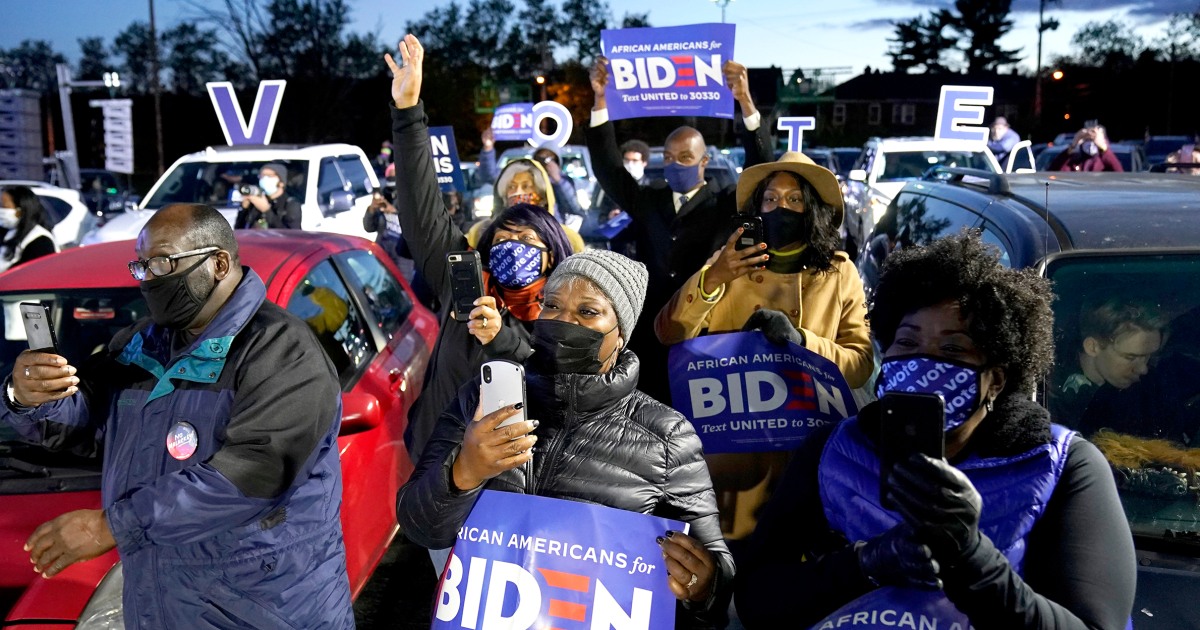
WASHINGTON — Democrats pride themselves on the diversity of their voters, but the people who run their campaigns are still disproportionately white graduates of elite colleges, according to new data.
“The key staff of the Democratic Party is more racially representative than it has ever been and not nearly as racially diverse as it ought to be,” said Daniel Laurison, a sociologist at Swarthmore College in Pennsylvania who spent years collecting data for his new book, “Producing Politics: Inside the Exclusive Campaign World Where the Privileged Few Shape Politics for All of Us.”
Laurison, with the help of research assistants, combed through LinkedIn and other sources to compile a database of more than 4,500 Republicans and Democrats who worked on presidential primary or general election campaigns from 2004 to 2020. They found that class and race disparities persist in both parties.
The people in those positions, Laurison said, not only advise powerful policymakers; they also craft the political messages that help shape Americans’ understanding of politics and their place in it.
“One of the big reasons that politics feel off-putting to so many people is this sense of disconnection and this sense that it’s for other kinds of people,” Laurison said. “If, especially, Democratic campaigns had staff at all levels that looked more like the people they are trying to reach, they would be more effective in reaching those people. It’s kind of hard to imagine that they wouldn’t.”
The gap is especially jarring for Democrats, because they have more racially diverse voters and have made representation a core party value.
While about two-thirds of U.S. adults did not go to college, including slightly more than half of Democratic voters in 2020, fewer than 10% of Democratic political professionals do not have college degrees, according to Laurison’s research.
Moreover, almost 40% of Democratic staffers went to elite schools like those in the Ivy League and other famous private universities, compared to just 4% of the overall population.
When it comes to race, almost 80% of political professionals are white, according to Laurison, including nearly 90% of Republican staffers and 68% of Democratic staffers. The overall electorate was 61% white in 2020, according to figures from the Pew Research Center.
White staffers hold more than two-thirds of management roles on Democratic campaigns, Laurison said.
Much of the diversity on Democratic campaigns is at the political outreach level, where Black and Latino staffers are often employed to bolster ties with those constituents.
Meanwhile, about 80% of communications operatives on Democratic campaigns are white. Staffers who hold those positions help shape political messages and are sometimes the only public faces of campaigns besides the candidates.
“There’s real sorting within campaigns by race,” Laurison said.
Democrats have been aware of the issue for years, and they have worked with left-leaning campaign-focused companies like Arena, which invited Laurison to share his findings with it on Tuesday, to try to diversify their pipeline of talent.
The efforts have shown some success. In 2004 and 2008, Laurison’s research found, 78% of Democratic operatives on national campaigns were white. The figure fell to 68% in 2020.
But Laurison noted that the world of political campaigns is both unstable and insular, while it offers little pay for staffers. That makes it difficult, he said, for people to break into the field without the right connections or financial cushions to fall back on when campaigns end.
And class gets even less attention than race, Laurison said; there are few, if any, visible Democratic efforts to hire more people without college degrees.
“Campaign professionals are intermediaries between regular people and politics,” he said. “So the more they’re connected to more people, both directly through their networks and diffusely through their experience, the more politics is going to be reflective of the whole country.”
Source: | This article originally belongs to Nbcnews.com










